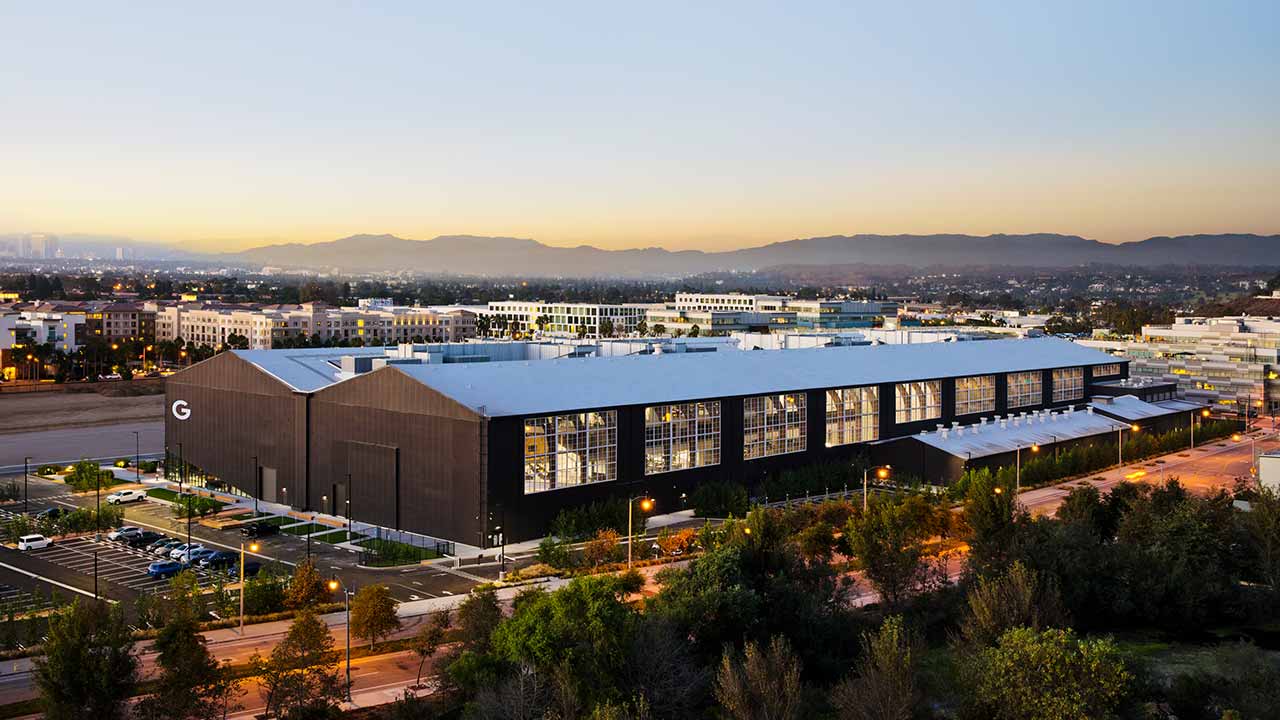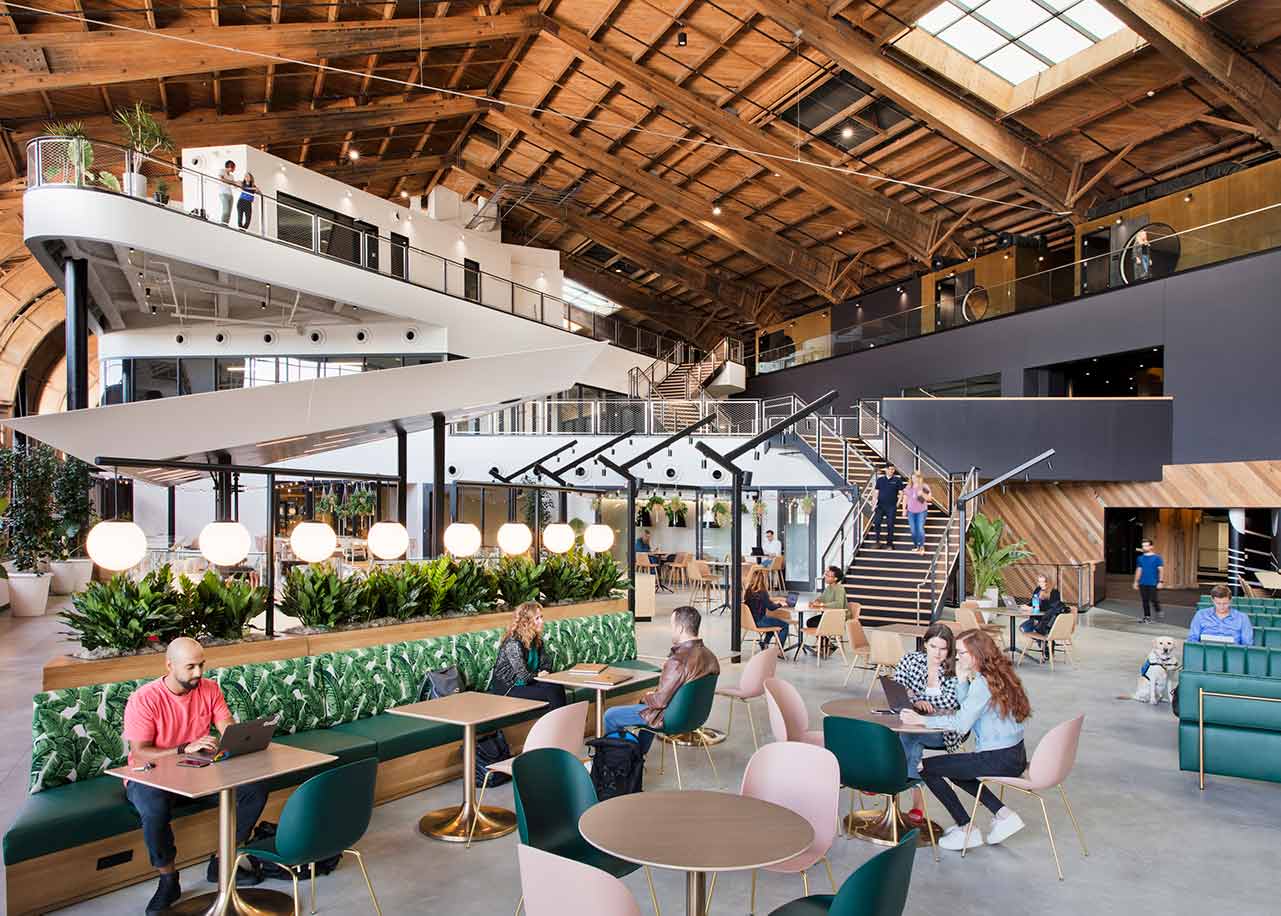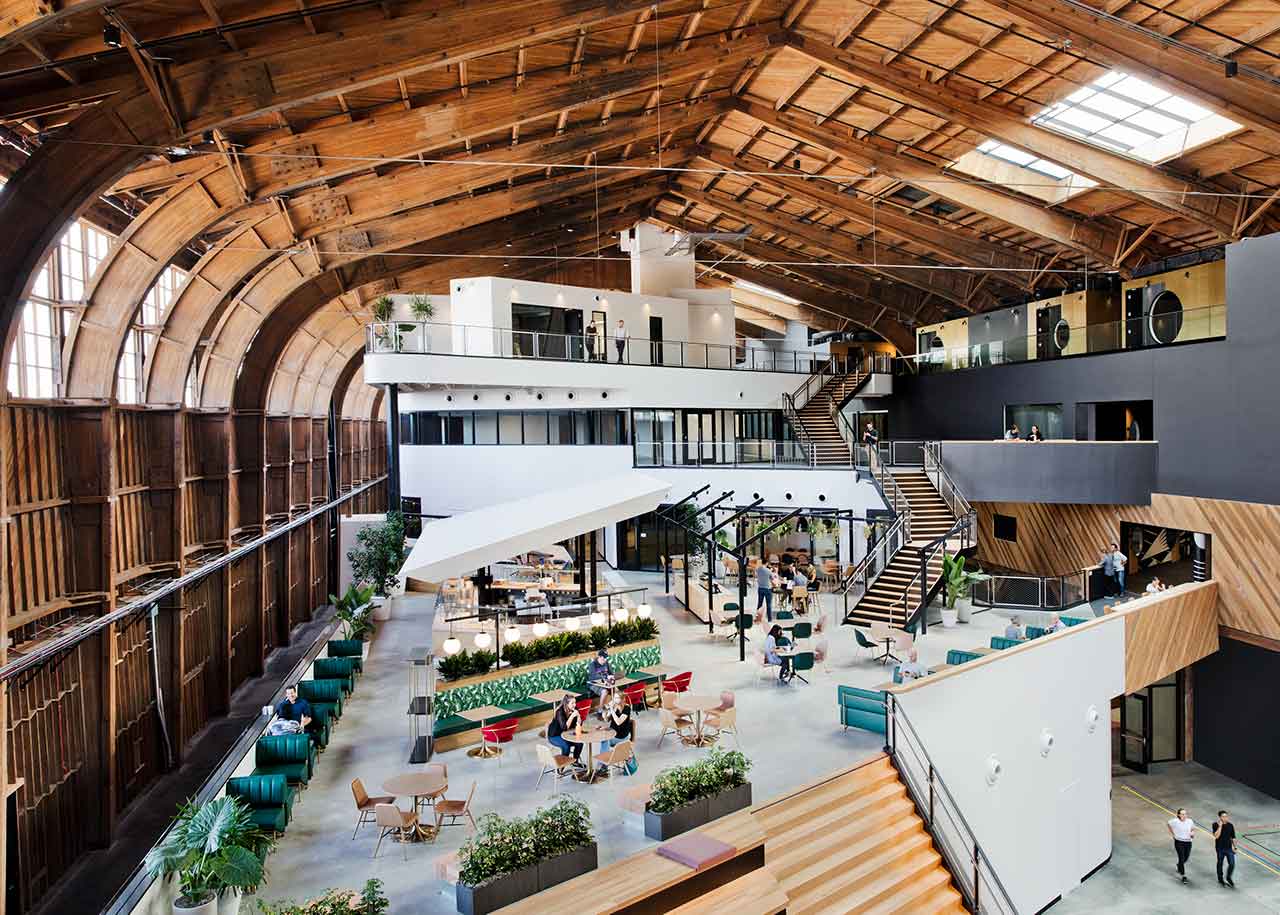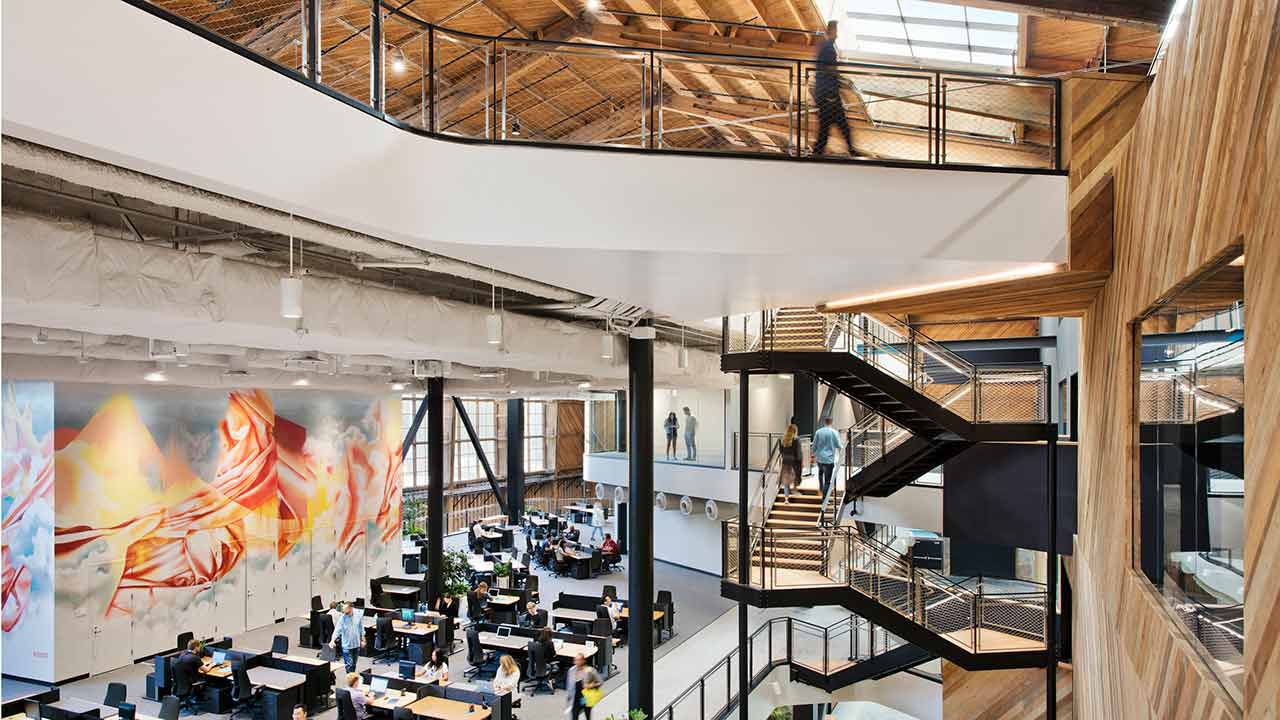ZGF Architects teamed up with the tech leader to transform the former home of Howard Hughes’ famous aircraft into an office space unlike any other.

[Photo: Connie Zhou]
PROJECT: Google, Spruce Goose LOCATION: Playa Vista, CA SIZE: 450,000 square feet COMPLETION: 2018 ARCHITECT: ZGF Architects ENGINEERS: Arup GENERAL CONTRACTOR: Matt Construction
Howard Hughes’ H-4 Hercules flying boat is the stuff of aviation legend. The colossal aircraft—known commonly as the Spruce Goose—was made almost entirely of wood due to wartime restrictions on critical materials like steel and aluminum, and the hulking prototype’s wingspan stretched an astounding 320 feet—six yards longer than the length of a football field, and the longest span of any aircraft to take flight, even if only once.
Though far more practical, the hangar that once housed Hughes’ infamous plane is also an enormous, awe-inspiring wooden design—one that now stands among the most noteworthy office-space adaptive reuse projects of recent years. After roughly two years of work, ZGF Architects in November 2018 completed renovating the site into offices for Google, now the third office building in the tech company’s growing Playa Vista campus.
The project is textbook renovation meets preservation on a grand scale. The team built four new levels inside the hangar; at the same time, they preserved the space’s dramatic glulam arches and wood siding. They now nestle 450,000 square feet of office space around the site’s original central “spine,” which runs the 750-foot length of the building. It’s “arguably one of the world’s most spectacular workplaces,” says ZGF partner Ted Hyman, one that “has vastly minimized environmental and community impact compared to demolition and new construction.”

[Photo: Connie Zhou]
Unless you’re peering through one of the hangar’s majestic clerestory windows, the industrial exterior gives little hint of the innovative design inside—what Hyman refers to as a “building within a building.” The inner “building,” likened by some observers to a ship with its nautical white sheen and tiered design, is offset from the timber envelope, giving the lower floor a long promenade around the perimeter. The floor planes recede in scale as you move up the levels, keeping the space open.
Like the statement design, the renovation process was hardly typical. Kristi Paulson, a principal at ZGF and the lead project designer, describes the process as “highly iterative,” and one of “test and learn exploration.” Indeed, the project had to balance not only aesthetics and preservation but a host of functional concerns, including the incorporation of major mechanical and electrical systems into the high-tech office environment.
The office houses employees of both Google and YouTube, which the tech giant acquired in 2006. Though the company remains forever associated with the Bay Area, it now has some 1,000 employees working in and around Los Angeles. And in this latest development, the company has not only salvaged a historic site that dates back to 1943 from disuse, but it’s done so in way that explicitly ties its ambitious spirit with those of the past—reflecting “Google’s creative culture in the context of the hangar’s rich history of innovation,” Hyman says.

[Photo: Connie Zhou]
Opening Things Up
Wanting to emphasize natural light, ZGF restored the building’s clerestory windows, which had been closed up when the hangar was used for a time as a film studio. They also added strategically positioned skylights, along with supplemental task lighting in the workspaces and conference rooms below. In terms of sound control, ZGF added acoustics-managing floor plates of varying sizes and positioned enclosed spaces like conference rooms to run alongside open workspaces, shielding them from outside noise.
Complementing the Lead
The new office’s main attraction is undoubtedly the wooden atrium, which looms 75 feet aboveground at its highest point. In order to let the timber finish shine, the design team favored a restrained aesthetic: matte finishes, brushed metal wall coverings, windows framed by black steel, abundant plant life, and wood panels and soft white walls—all intended to complement rather than compete with the restored arches. Gray concrete floors, like the one in this café space, exemplify the intended soft materials touch.

[Photo: Connie Zhou]
Showing Some Spine
During the site’s original aircraft-storage life, the long “spine” that bisects it held engineers’ offices. Google and ZGF wanted to make sure that extensive backbone opened up the area and fostered interaction, so they reserved it for breakout rooms and dining spots, which spill out into the open-office plan under the atrium. In order to preserve the spine, the team reinforced it with steel and concrete then covered it with wood reclaimed from the roof. Other salvaged wood went into furniture construction for the office.

[Photo: Connie Zhou]
Honoring History
The new offices honor the site’s aviation history in its interior design, too. Many phone rooms and meeting spaces are air- or sky-themed, including rooms with butterfly, zephyr, and Andromeda concepts. An abstract cloud design in the photo above overlooks an open-environment workspace, and the tiered staircases and open walkways throughout the upper levels lend a sense of elevation. “Together we created an intelligent and engaging new office space that acknowledges yet remains independent of its historic envelope,” says Paulson, of the team’s work with Google.
